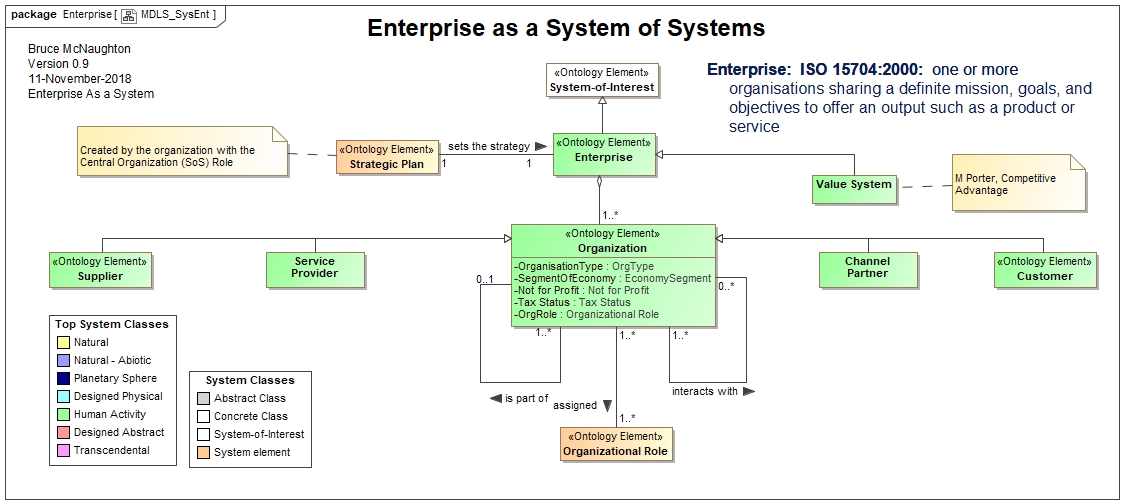View: System Structure (Pattern of Organization)
The system structure or pattern of organization represents a logical model of the systems for the system-of-interest. This logical model is independent of any specific physical realization of any of the systems. This logical model may also be called a conceptual model of the system-of-interest.
System Element: Identification and Relationships
The whole Enterprise as a System of Systems (SoS) is shown on the following System Breakdown Structure. This model shows both the identified systems and their relationships. This is a logical model of the enterprise.

This System Breakdown Structure contains the following systems within the Enterprise (SoS):
The Enterprise (SoS) conceptual model for this system-of-interest is shown in the following picture:

The Organization is an essential system element of an Enterprise.
The Enterprise is realized through a network of organizations. The following may be types of organizations found within an Enterprise as a System of Systems (SoS).
- Customer Organizations
- Supplier Organizations (all organizations across any of the supply chains)
- Partner Organizations (Service or Sales)
- One or more organizations forming the core of the enterprise (e.g. central organization supported by other internal organizations)
- Organizations may also interact with government or non-government organizations.
Each organization that contributes to the enterprise takes on a role. The roles that the organizations can take on are:
- Suppliers
- Customers
- Types of partners (sales or Service)
- Regulators, etc.
The Compass Project has identified a number of architectural patterns for a System of Systems. The Centralized Architecture Pattern with a central constituent system as a hub is a typical candidate for the Enterprise as a System of Systems (SoS). See the document: "D22.3 – Report on Modelling Patterns for SoS Architectures (Public)" for other architecture patterns.
The types of relationships between the various organizations are the following:
- Contractual
- Customers,
- Suppliers,
- Sales Partners,
- Delivery Partners (products and services)
- By regulatory requirements / law
- Partnerships and associations
These contracts and organizational relationships are aligned through an Enterprise Strategic Plan.
These organizations can then be considered system elements or parts within an Enterprise as a System of Systems (SoS). The roles that the organizations take on define their relationships to each other.
At the same time, a constituent system can be considered as an Organization